The Texas Longhorn cattle are an exceptional breed of cattle used primarily for meat production. The breed is known mainly for it’s characteristic very long horns. Their horns are not usual like most other cattle breeds.
The horns of Texas Longhorn cattle can extend to over 6.9 ft (2.1 m) tip to tip for steers and exceptional cows, and 5.9 ft (1.8 m) tip to tip for bulls.
They have been a fixture of life in Texas beginning with the earliest missions established by the Spanish when they first arrived. Those early settlers brought their resistant and tough cattle with them.
And roots of those tough and resistant cattle went back to the south of Spain. The settlers used to use their cattle for hides, meat, milk and for oxen. Political control f Texas switched to Anglos in the 1830s.[1]
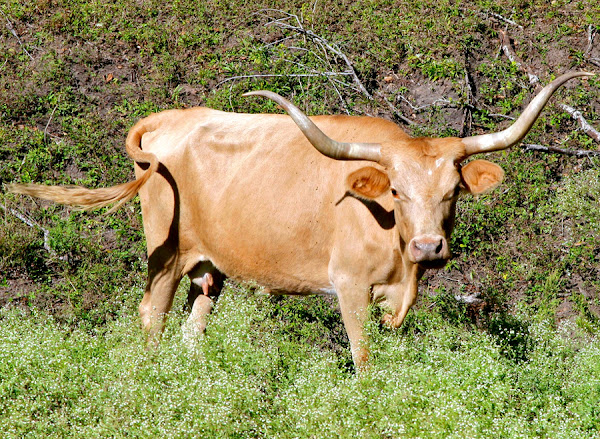
Cattle management essentially ceased so that cattle ran totally free during the Civil War. And vast herds become the source of Texan wealth and recovery after the war. Because cattle were trailed north for satisfying the demand for meat that came with industrialization and a growing nation.
The Texas Longhorn cattle breed declined in popularity in the 1900s. During that time, improved European, British and Indian cattle breeds were imported to the region for boosting meat production.
This influx of new breeds has very nearly caused the extinction of many of today’s heritage breeds. But fortunately, the Texas Longhorn cattle breed has always been connected with Texan identity. And some breeder always kept the herds going. However, read more information about the Texas Longhorn cattle breed below.
Texas Longhorn Cattle Characteristics
Texas Longhorn cattle are relatively smaller sized animals. The breed shares traits and appearances with many Criollo breeds from throughout the Americas that descend from the same roots.
Their coat color vary, with attractively speckled hides occurring as often as solid colors. The Texas Longhorn cattle are rangey, and both bulls and cows have long twisty horns.
Average weight of the animals is between 272 and 545 kg.
Housing
Texas Longhorn cattle are an iconic breed that has been an integral part of Texas culture and history for centuries. These cattle are known for their distinctive long horns and rugged, adaptable nature, which allows them to thrive in a variety of environments. However, despite their hardiness, Texas Longhorns still require proper housing to keep them healthy and comfortable.
When it comes to housing Texas Longhorn cattle, there are several factors to consider. First and foremost is space. These cattle are larger than many other breeds, so they require more room to move around and graze. A good rule of thumb is to provide at least 250 square feet of space per animal.
Another important factor is shelter. While Texas Longhorns are well-suited to living outdoors, they still require protection from the elements. A sturdy shelter, such as a pole barn or sturdy shed, can provide shade in the hot Texas summers and protection from the wind and rain in the winter.
In addition to space and shelter, it’s also important to consider the layout of the housing area. Fences should be sturdy and secure to prevent the cattle from wandering off, and gates should be wide enough to allow for easy movement in and out of the housing area.
It’s important to keep the housing area clean and well-maintained. This includes regular removal of manure and other waste, as well as providing clean water and food on a regular basis.
Feeding
Texas Longhorn cattle are a hardy breed that can thrive in a variety of environments, but proper feeding is essential to their health and well-being. Feeding Texas Longhorns requires attention to their nutritional needs, as well as their unique grazing habits.
The first consideration when feeding Texas Longhorn cattle is their diet. These cattle are adapted to grazing on tough, fibrous plants, so their diet should consist mainly of forage, such as hay, grass, and other vegetation. However, it’s important to ensure that they receive enough protein, vitamins, and minerals to maintain good health. Supplementing their diet with protein-rich feed or minerals can help ensure that their nutritional needs are met.
Another important factor to consider is grazing habits. Texas Longhorn cattle are known for their ability to graze in tough environments, but they have specific grazing preferences. They prefer to graze on plants that are low in sugar and high in fiber, and they tend to avoid areas where there are many short, sweet grasses. Providing them with access to a variety of forage options, such as tall grasses and shrubs, can help ensure that they receive a balanced diet.
It’s also important to provide Texas Longhorn cattle with clean, fresh water on a regular basis. They require a lot of water to maintain their health, especially during hot Texas summers.
Breeding
Texas Longhorn cattle are a distinctive breed that has a rich history and culture in Texas. Breeding Texas Longhorns requires attention to the breed’s unique characteristics and desired traits, as well as proper management of the breeding process.
One important factor to consider when breeding Texas Longhorns is the desired traits for the offspring. Long, curved horns are a distinctive feature of the breed, so many breeders focus on producing offspring with desirable horn characteristics. Additionally, factors such as body conformation, color, and temperament may also be important considerations.
Another important factor is the management of the breeding process. Texas Longhorn cattle can breed naturally or with artificial insemination, and both methods have their advantages and disadvantages. Natural breeding can result in a stronger genetic diversity, but artificial insemination can allow for more control over the breeding process and the selection of desirable traits.
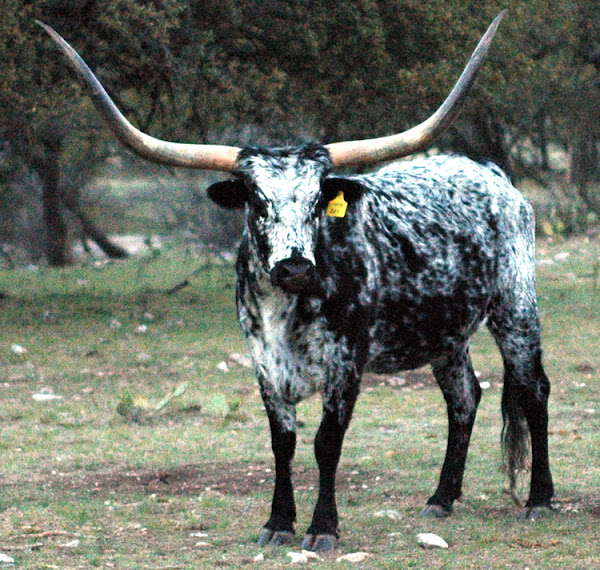
Breeding also requires careful attention to the health and well-being of the cattle. Proper nutrition, regular health checks, and management of environmental factors, such as temperature and weather conditions, can help ensure the success of the breeding process.
It’s important to consider the market demand for Texas Longhorn cattle and their offspring. Understanding the needs and preferences of potential buyers can help breeders produce cattle that meet market demand and ensure a profitable return on investment.
Uses
Texas Longhorn cattle were used for many purposes previously. But now they are used for meat production.
Special Notes
The Texas Longhorn cattle are tough and resistant breed of cattle. They are very active and hardy, but docile in temperament. They are also valued for their reproductive abilities, and longevity.
The Texas Longhorn cattle are often used for crossbreeding other cattle breeds. And crossbreeding with British, European and Indian breeds results in great hybrid vigor in the offspring. Review full breed profile of this breed in the following table.
| Breed Name | Texas Longhorn |
| Other Name | None |
| Breed Purpose | Meat, Milk |
| Special Notes | Hardy, Active, Docile |
| Breed Size | Small to Medium |
| Bulls | Between 272 and 545 kg |
| Cows | Between 272 and 545 kg |
| Climate Tolerance | All Climates |
| Coat Color | Coat color vary, with attractively speckled hides occurring as often as solid colors |
| Horned | Yes |
| Milk Yield | Poor |
| Rarity | Common |
| Country/Place of Origin | United States |
Texas Longhorn Cattle Facts
Texas Longhorn cattle are a breed of cattle that has played a significant role in the history of the American West. Known for their distinctive long, curved horns, these cattle continue to be a popular breed for ranchers and cattle enthusiasts today.
Now we will explore some of the best Texas Longhorn cattle facts, including their history, physical characteristics, and unique traits.
- Texas Longhorn cattle are a breed that originated in the United States and are descended from the cattle brought over by Spanish explorers in the 1500s.
- These cattle were a mix of Andalusian, Galician, and Leonesa breeds, and were known for their hardiness and ability to thrive in the harsh conditions of the American Southwest.
- Over time, these cattle began to interbreed with wild cattle that roamed the area, resulting in a new breed that was well-adapted to the rugged terrain and extreme temperatures of Texas.
- Texas Longhorn cattle played a significant role in the history of the American West, with many ranchers using them for beef production in the mid-1800s.
- These cattle were able to survive on sparse vegetation and were resistant to many of the diseases that plagued other breeds, making them an ideal choice for ranchers who needed hardy and adaptable cattle.
- Texas Longhorn cattle are known for their long, curved horns, which can grow to be several feet in length and are used by the cattle for defense and as a means of establishing dominance within the herd.
- These horns are made up of a bony core that is covered in a layer of keratin, the same material that makes up human hair and nails.
- The size and shape of a Texas Longhorn’s horns can vary greatly from individual to individual, with some horns curving upwards, while others curve downwards.
- Texas Longhorn cattle are typically brown or black in color, although other variations do exist, including white, gray, and red.
- These cattle are lean and muscular, with a relatively low body fat percentage, making them an ideal choice for beef production.
- Texas Longhorn cattle are able to survive in harsh environments, thanks to their efficient metabolism and their ability to regulate their body temperature.
- These cattle are also known for their longevity, with some individuals living to be over 20 years old.
- Texas Longhorn cattle are intelligent and adaptable, making them ideal for ranchers who need to move their herds frequently in search of fresh grazing land.
- These cattle are generally docile and easy to handle, despite their large size and imposing appearance.
- Texas Longhorn cattle have a strong maternal instinct and are known for being excellent mothers to their calves.
- These cattle are resistant to many common cattle diseases, including bovine tuberculosis and brucellosis.
- Texas Longhorn cattle are considered a heritage breed by the American Livestock Breeds Conservancy, which is dedicated to preserving rare and endangered breeds of livestock.
- The meat from Texas Longhorn cattle is lean and flavorful, and is often considered to be healthier than beef from other breeds.
- Texas Longhorn cattle have been used in crossbreeding programs to improve the hardiness and adaptability of other breeds of cattle.
- These cattle continue to be an important part of American agriculture and culture, with many ranchers and cattle enthusiasts keeping herds of Texas Longhorns for both their historical significance and their practical usefulness.
Tips for Caring Texas Longhorn Cattle
Like all animals, Texas Longhorn cattle require proper care and attention to thrive. Now we will provide some best tips for caring for Texas Longhorn cattle, including advice on feeding, housing, and general health and wellness.
- Provide ample grazing land: Texas Longhorn cattle are hardy and adaptable, but they still require plenty of grazing land to thrive. A good rule of thumb is to provide at least two acres of pasture per cow.
- Supplement with hay: In times of drought or during the winter months, when grazing land may be sparse, it is important to supplement your Texas Longhorn’s diet with hay.
- Provide clean, fresh water: Clean, fresh water should always be available to your Texas Longhorn cattle. Be sure to check water sources regularly and clean out any debris or contaminants.
- Provide shelter: While Texas Longhorn cattle are hardy and able to withstand harsh weather conditions, it is still important to provide them with shelter from the elements, such as a barn or covered area.
- Practice rotational grazing: Rotational grazing involves moving your cattle from one section of pasture to another on a regular basis. This helps to prevent overgrazing and allows the land to recover.
- Monitor weight: Regularly monitor the weight of your Texas Longhorn cattle to ensure that they are maintaining a healthy weight. Underweight or overweight cattle can both be indicators of health problems.
- Provide mineral supplements: Texas Longhorn cattle require certain minerals, such as calcium and phosphorus, to maintain their health. Provide a mineral supplement to ensure that these needs are being met.
- Vaccinate: Like all cattle, Texas Longhorn cattle require regular vaccinations to prevent diseases such as bovine respiratory disease and blackleg.
- Deworm regularly: Parasites such as worms can be a problem for Texas Longhorn cattle, so it is important to deworm them regularly to prevent infestations.
- Trim hooves: Overgrown hooves can be painful for cattle and can lead to infections. Regularly trim your Texas Longhorn’s hooves to prevent these problems.
- Provide socialization: Texas Longhorn cattle are social animals and thrive in a herd environment. Provide ample socialization opportunities by keeping multiple cattle together.
- Keep up with veterinary care: Regular veterinary care is essential for the health and wellness of your Texas Longhorn cattle. Be sure to schedule regular check-ups and seek veterinary care immediately if any health problems arise.
- Keep pastures clean: Dirty or overgrazed pastures can lead to health problems for Texas Longhorn cattle. Regularly clean up manure and debris to keep pastures healthy and clean.
- Provide shade: Like all cattle, Texas Longhorn cattle are susceptible to heat stress. Provide ample shade to prevent this problem, especially during the hottest months of the year.
- Provide proper fencing: Adequate fencing is essential to keep your cattle safe and prevent them from wandering off. Make sure that your fencing is strong and secure.
- Use caution when handling: While Texas Longhorn cattle are generally docile and easy to handle, they can become agitated if they feel threatened. Use caution when handling them and avoid sudden movements or loud noises.
- Be patient: Caring for Texas Longhorn cattle requires patience and dedication. Take the time to learn about their needs and behaviors, and be willing to put in the effort to provide the best possible care for your herd.

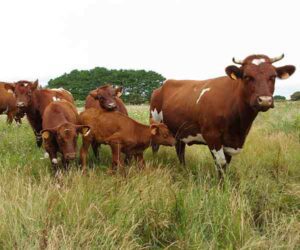
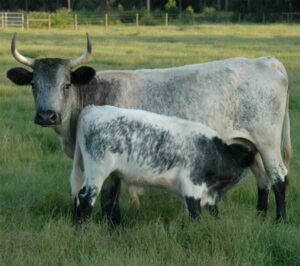
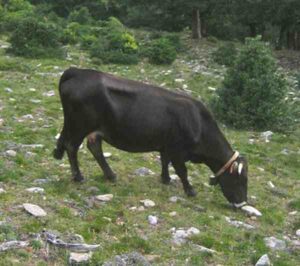
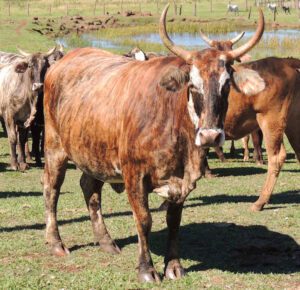
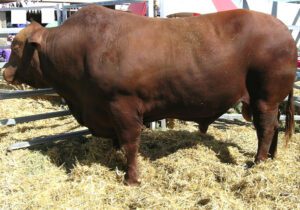
Very beautiful and big animals.